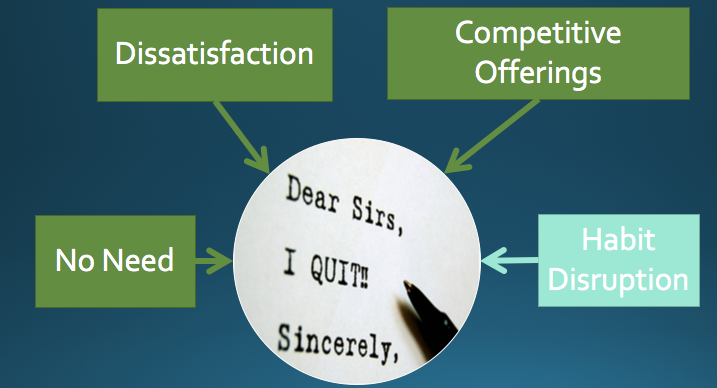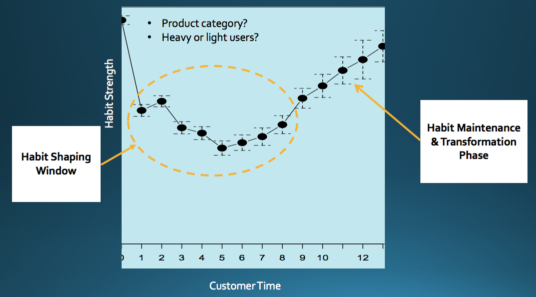Welcome to the third and final part of this series on how to build and leverage customer habits throughout the customer journey. In Part 1 and Part 2, I shared with you the differentiation between a habit shaping window and a habit maintenance and transformation phase in a customer’s lifetime with the business and how habit disruption can serve as a beacon for possible customer defection. Today I would like to talk a little about what you should know about loyalty and habit in the customer expansion phase. Oftentimes your business may not be content with just retaining your existing customers. Your ambition may be to grow your existing customers’ relationship with you by getting them to buy more, upgrade, or buy other product lines that you also offer. To do this successfully, you need to understand what drives your customer and know if your customer loves you or they are simply habitual or both.
Segment Customers by Attitudinal Loyalty and Habit
Before implementing a customer expansion (cross-selling or up-selling) campaign, it is important to know where your customers are in the two-dimensional space of loyalty and habit. By loyalty, I don’t mean just behavioral loyalty such as buying a lot, because habitual customers may look exactly like that too. Instead, I refer to loyalty in the sense of how consumers feel about your brand. The attitudinally loyal customers are ones that love your brand, believe in the quality of your product, and prefer you over competitive products when asked. Because attitudinally loyal and strongly habitual customers are both likely to buy a lot from you, they may look very similar in their behavior in terms of how frequently they purchase or how much they spend. You have to dig a little deeper into their behavior to identify which is which. The key difference is that habitual customers tend to demonstrate a certain level of consistency and stability in what they do. They may buy around the same time, from the same location, repeatedly buy the same product, almost always (or never) use coupon, etc. The ones who are attitudinally loyal but NOT habitual will also buy a lot, but you won’t see the same stable behavioral pattern. The table below will help you make a determination based on what your customers do. If you are interested in a more nerdy academic dive into the differences, check out my published paper Not All Repeat Customers Are the Same.
| True Loyalty | Habit | |
|---|---|---|
| What drives behavior? | Belief about product superiority and/or emotional connection | The presence of contextual cues (e.g., eat cookie -> want milk) |
| Awareness | Conscious decision | Automatic process with no clear decision-making process |
| Purchase pattern | Erratic as need arises | Consistent in terms of time, location, and context (see more below) |
| Reaction to competitive offerings | Aware of competitive offerings but relatively resistant due to loyalty | Blind to competitive offerings |
| Deal breakers | Dissatisfaction, product quality issues, service failure, etc. | Change of contextual cues, such as store layout redesign, location change, etc. |
Before I move on, I would like to add that habit is easier to observe through behavior than attitudinal loyalty, as habit has a certain pattern to it. To accurately gauge attitudinal loyalty, it would be best to survey your customers and ask about their thoughts and feelings about your product. But if that is not possible, the table above combined with customer purchase data should still help you separate those frequent customers who are driven by habit vs. not habit (e.g., loyalty). Customers’ social media conversations with you can also give you some clues as to how loyal they are to your brand. Continue reading “How to Build Customer Habits Through Customer Relationship Management Part 3”


